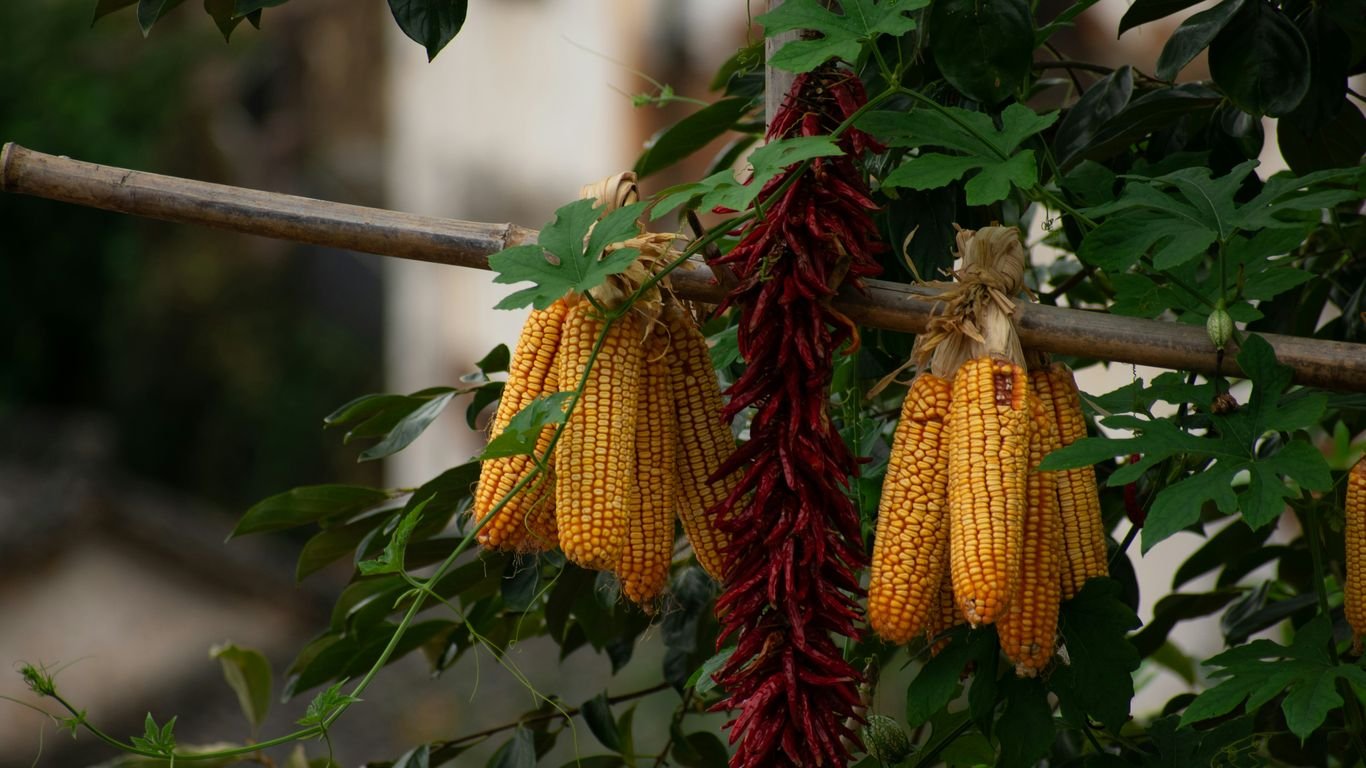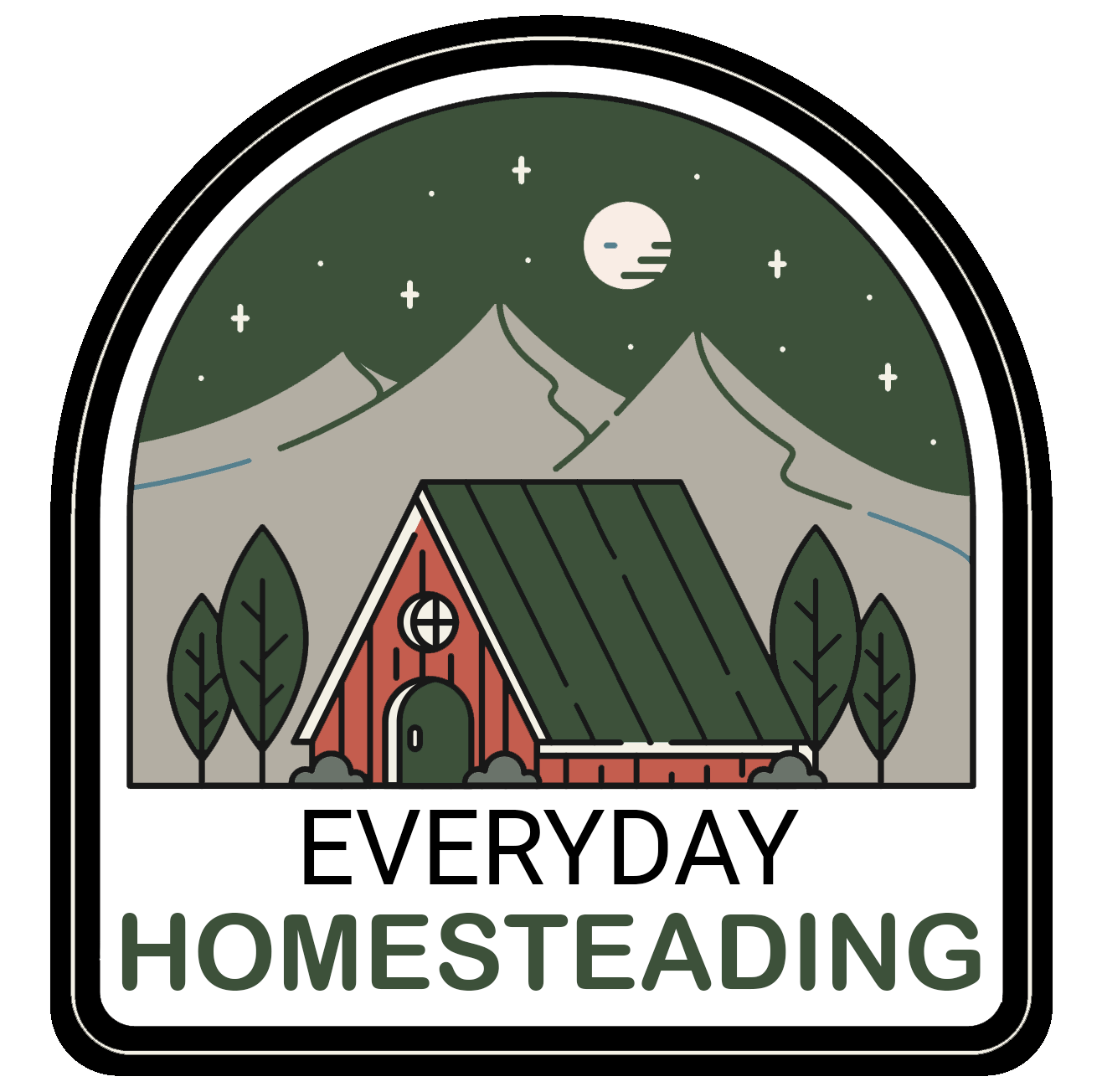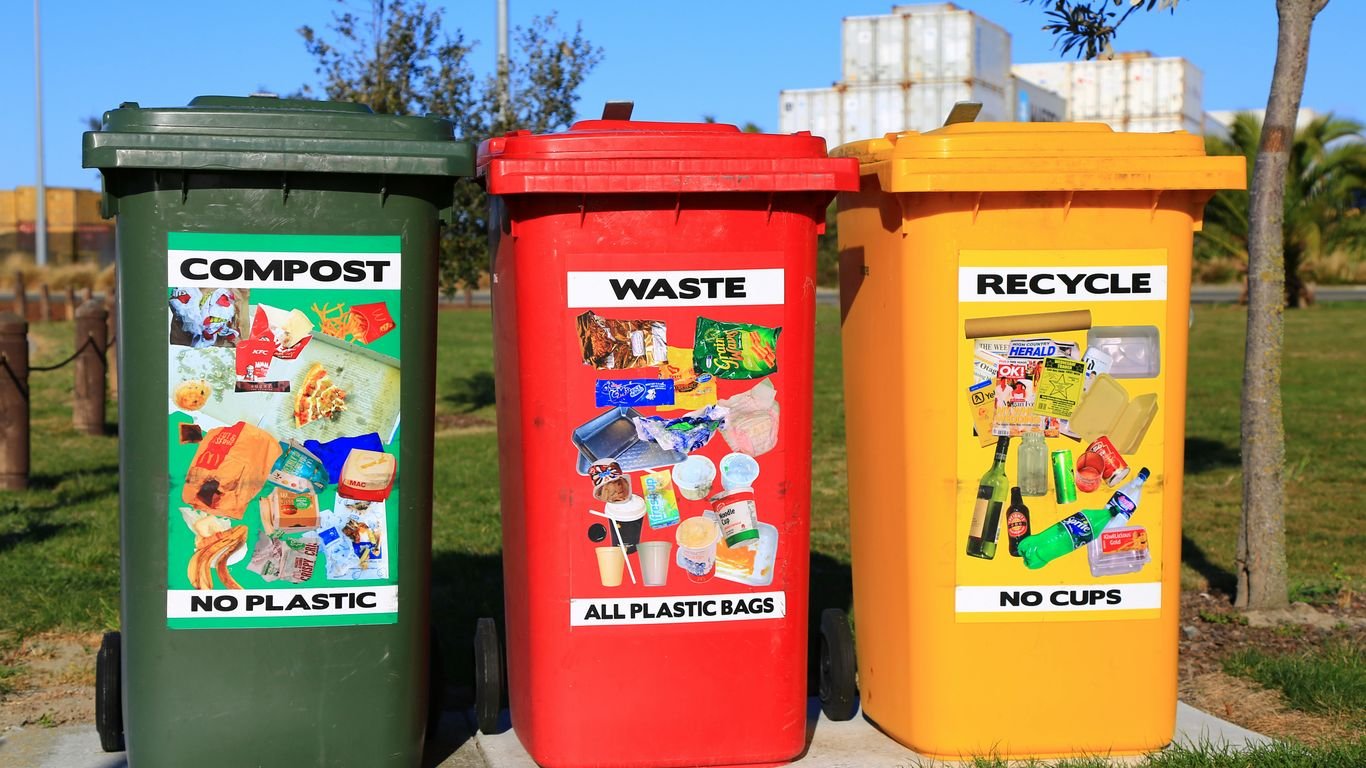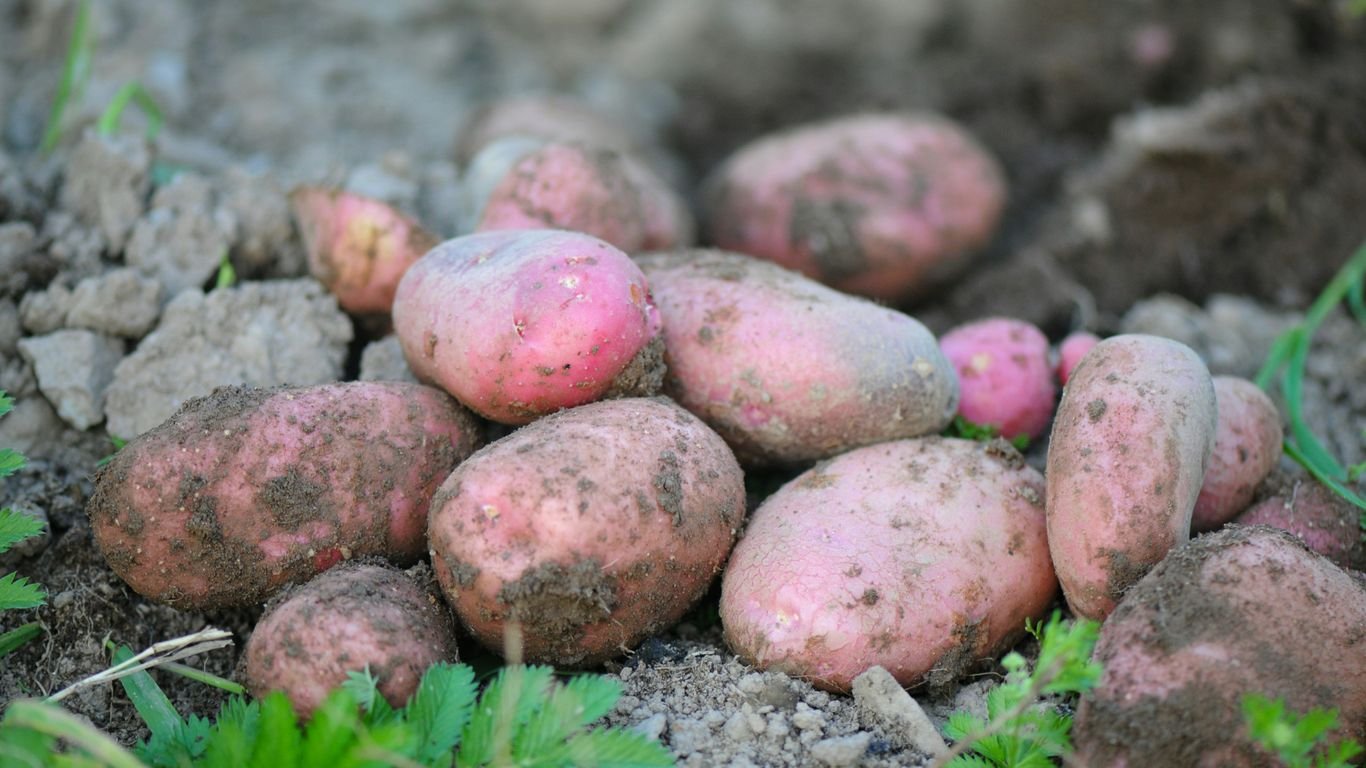Companion Planting for Corn: Three Sisters and Beyond

We love growing corn, but sometimes it feels like a lot of work. We’ve found that using corn companion plants makes a big difference. It’s like giving our corn a little help from its friends in the garden. This helps us get more corn and keeps pests away. We’ll look at some great options, including the famous Three Sisters.
Key Takeaways
- The ‘Three Sisters’ – corn, beans, and squash – are a classic example of companion planting, where each plant helps the others grow.
- Beans fix nitrogen in the soil, which feeds the corn, and they use the corn stalks to climb.
- Squash and melons act as ground cover, keeping weeds down and moisture in the soil.
- Plants like lettuce and spinach can grow in the shade of corn, helping to keep the soil cool and moist.
- Marigolds are great for deterring pests like corn earworms and aphids, and they attract helpful insects.
The Legendary Three Sisters
When we talk about companion planting, we absolutely have to start with the legendary Three Sisters. This isn’t just some gardening fad; it’s an ancient Indigenous agricultural practice that’s been sustaining communities for centuries. We’re talking about corn, beans, and squash, planted together in a way that’s almost magical in how well they support each other. It’s a beautiful example of how nature works when different plants are allowed to cooperate.
Corn, Beans, and Squash: A Natural Partnership
At its heart, the Three Sisters method is about intercropping, which means planting different crops in close proximity for mutual benefit. The corn provides a sturdy stalk for the beans to climb, and in return, the beans fix nitrogen in the soil, which is a vital nutrient for the corn. Then comes the squash, often planted around the base of the corn and beans. Its large, sprawling leaves act like a living mulch, suppressing weeds and keeping the soil moist. This trio is a perfect example of ecological synergy in the garden. It’s a system developed over generations, showing a deep understanding of plant relationships. Many Indigenous cultures, like the Haudenosaunee (Iroquois) people, consider these plants to be sacred gifts, central to their way of life and even their origin stories.
How the Three Sisters Support Each Other
We’ve touched on it, but let’s break down how these plants help each other out. The corn, obviously, grows tall and provides a natural trellis. Without it, pole beans would need separate supports. The beans, being legumes, have a special ability to pull nitrogen from the air and convert it into a form that plants can use, enriching the soil for all three. This means less need for fertilizers. The squash is the ground cover champion. Its broad leaves shade the soil, which keeps it cool, prevents water from evaporating too quickly, and, importantly, stops most weeds from even getting started. It’s a complete system that reduces the need for external inputs and creates a healthier growing environment. Some sources even suggest that the combination of these plants can help deter certain pests that might otherwise target individual crops.
Planting the Three Sisters Together
Getting started with the Three Sisters is pretty straightforward, though there are a few ways to do it. The traditional method often involves planting in mounds, creating small hills rather than rows. We usually aim for hills about 4 feet wide and spaced about 4 feet apart. In each hill, we’ll plant about 4 to 6 corn seeds. Once the corn is a few inches tall, we add the bean seeds around the base. A little later, we plant the squash seeds in the spaces between the hills. It’s important to choose varieties that work well together; for instance, using pole beans rather than bush beans is key for the climbing aspect. When selecting your seeds, think about what grows well in your area. You can find a great variety of heirloom seeds for squash and beans at places like Baker Creek Heirloom Seeds.
This planting method is more than just a way to grow food; it’s a philosophy of working with nature, not against it. It’s about creating a balanced ecosystem right in our own backyards.
Beans: The Nitrogen Fixers
When we think about companion planting with corn, beans are a natural partner. They’re not just there to look pretty; they actually help the corn grow better. This is thanks to a cool process called nitrogen fixation. Basically, beans have these tiny nodules on their roots that pull nitrogen from the air and turn it into a form that plants can use. Corn, on the other hand, is a heavy feeder and uses up a lot of nitrogen from the soil. So, by planting beans nearby, we’re essentially giving our corn a free, natural fertilizer boost.
Pole Beans as Corn’s Climbing Partner
Corn stalks are pretty sturdy, right? That makes them perfect natural trellises for climbing plants. Pole beans, like runner beans or even some varieties of lima beans, love to scramble upwards. Planting them right next to your corn gives them something to hold onto as they grow tall. This saves us space in the garden and means the beans get good sun exposure without needing extra support structures. It’s a win-win situation.
Peas: Another Legume Option
If pole beans aren’t your thing, or maybe you want to try something different, peas are another excellent legume to pair with corn. Just like beans, peas also fix nitrogen in the soil, helping to feed your corn. They’re a bit more delicate than pole beans, but they can still make good use of the corn stalks to climb. Plus, who doesn’t love fresh peas?
How Beans Benefit Corn
We’ve touched on the nitrogen fixation, but there’s more to it. Beans help improve the soil structure over time. As their roots grow and decompose, they add organic matter. This makes the soil healthier and better able to hold water. Plus, the dense foliage of bean plants can help shade the soil, keeping it cooler and reducing evaporation, which is great for corn, especially during hot summer months.
Planting a mix of bean varieties, some that climb and some that bush out, can offer a diverse set of benefits to your corn patch. It’s all about creating a balanced ecosystem right in your garden.
Here’s a quick rundown of why beans are so good for corn:
- Nitrogen Fixation: They add vital nitrogen to the soil.
- Natural Trellis: Pole beans use corn stalks for support.
- Soil Improvement: Roots add organic matter and improve soil structure.
- Moisture Retention: Ground cover from some bean plants helps keep the soil moist.
Squash and Melons: Ground Cover Champions

When we think about companion planting for corn, squash and melons often come to mind, especially as part of the traditional Three Sisters planting. Their sprawling vines are fantastic for covering the ground. This dense growth habit is really useful because it helps smother weeds, keeping the competition down for our corn. Plus, it helps keep the soil temperature more even and holds onto moisture, which is a big win for both the corn and the beans we might be planting nearby. We’ve found that choosing the right variety makes a difference. While winter squash like butternut is a classic choice, we can also use pumpkins or even watermelons. The key is to make sure those vines stay on the ground and don’t try to climb the corn stalks. Heavy fruits could damage the corn, and we definitely don’t want that.
Here’s a quick look at how different ground cover plants can help:
- Weed Suppression: Large leaves create a dense mat that blocks sunlight, preventing weed seeds from germinating.
- Moisture Retention: The ground cover acts like mulch, reducing evaporation and keeping the soil consistently moist.
- Soil Temperature Regulation: It insulates the soil, protecting roots from extreme heat and cold.
We’ve noticed that letting these vines spread out naturally around the base of the corn creates a microclimate that benefits all the plants involved. It’s a simple yet effective way to manage the garden.
We also found that cucumbers can work in a similar way. They like the same sunny conditions and consistent watering as corn, and their large leaves also provide that beneficial ground cover. The corn offers some shade for the cucumbers, which is nice in hotter weather, and gives the cucumber vines something to climb on, keeping the fruit off the ground and away from pests. It’s amazing how these plants can support each other, making our gardening efforts more successful. Learning about these relationships has really helped us improve our yields and garden health, and you can find a good selection of seeds for these plants at places like True Leaf Market.
Leafy Greens for Cooler Spots
While corn loves the sun, some of its leafy companions prefer a bit of shade. This is where plants like lettuce and spinach come in handy. We’ve found that tucking these cool-season greens around the base of our corn stalks offers them a welcome respite from the intense summer sun. This shade helps prevent them from ‘bolting,’ which is when they go to seed prematurely due to heat, giving us a longer harvest period.
Lettuce’s Love for Shade
Lettuce, in particular, benefits greatly from the partial shade provided by taller corn plants. It acts as a living mulch, helping to suppress weeds and keep the soil moist, which is great because both lettuce and corn are thirsty plants. Planting lettuce near the corn is a simple way to manage both weed growth and soil moisture. We like to plant it in rows alongside the corn or directly at its base.
Spinach and Other Greens
Spinach and other leafy greens that prefer cooler conditions can also thrive in this microclimate. They appreciate the same moisture that corn needs, making them natural partners. Think of it as creating a little ecosystem where each plant helps the other out. It’s a smart way to maximize the space in our garden beds.
Benefits of Ground Cover Greens
Beyond just providing shade and moisture retention, these leafy greens serve as excellent ground cover. They help to smother any opportunistic weeds that might try to creep in and compete with our corn. This natural mulching effect reduces the need for manual weeding, giving us more time to enjoy the garden. Plus, having a variety of plants growing together just looks good, doesn’t it? It’s a win-win for plant health and our workload. We’ve seen great results using lettuce seeds as a companion for corn.
Marigolds: Nature’s Pest Deterrent
We all know how frustrating it can be when pests decide to munch on our hard-earned corn. Luckily, we have some colorful allies in the garden: marigolds! These cheerful flowers aren’t just pretty; they’re serious pest deterrents. Planting marigolds around your corn can make a big difference in keeping unwanted visitors away.
Repelling Corn Earworms and Aphids
Marigolds are particularly good at warding off two common corn nuisances: corn earworms and aphids. Corn earworms can wreak havoc on the ears themselves, while aphids suck the life out of the plants. The strong scent marigolds give off is a natural repellent for these bugs. It’s like a natural force field for your corn!
The Power of French Marigolds
When we talk about marigolds for companion planting, we’re usually thinking of the French varieties. They tend to have a stronger aroma than other types, making them more effective pest fighters. Plus, they’re super easy to grow from seed, so you can plant them right alongside your corn without much fuss. You can find a good selection of French marigold seeds to get started.
Attracting Beneficial Insects
It’s not just about repelling the bad guys; marigolds also invite the good guys. Their flowers can attract beneficial insects, like ladybugs and lacewings, which are natural predators to many garden pests. So, while marigolds are keeping the aphids and earworms away with their scent, they’re also bringing in the cavalry to help patrol your corn patch. It’s a win-win for our garden ecosystem. We’ve found that incorporating these flowers really helps with natural pest control, contributing to healthier soil and plants, much like using compost tea can do for your garden.
Marigolds are a simple, effective, and beautiful way to protect our corn. Their dual action of repelling pests and attracting beneficial insects makes them a top-tier companion plant. We love how they add a splash of color while doing serious work in the garden.
Here’s a quick rundown of why we love marigolds:
- Repel corn earworms and aphids.
- Attract beneficial insects like ladybugs.
- Easy to grow from seed, especially French varieties.
- Add a cheerful splash of color to the garden.
- Help deter soil nematodes with their strong scent.
Understanding Intercropping Benefits

When we talk about planting different crops together, like in the Three Sisters system, we’re really talking about intercropping. It’s a fancy word for growing two or more plants close to each other, close enough that they can actually interact. Think of it as a gardening team-up! This isn’t a new idea; people have been doing it for ages, and for good reason. Large fields of just one crop, called monocultures, can sometimes be a magnet for pests and can really deplete the soil. Intercropping helps us avoid some of those headaches.
What is Intercropping?
Basically, intercropping is any practice where we plant different crops together. This can include things like planting them in the same row, in alternating rows, or even planting a cover crop under a main crop. The key is that the plants are close enough to influence each other, whether it’s through their roots, their shade, or by attracting different kinds of insects. It’s a way to make our gardens more resilient and productive by working with nature, not against it.
Reducing Pest Problems
One of the coolest things about intercropping is how it can help keep pests in check. When you have a big patch of just one thing, it’s like rolling out a welcome mat for specific bugs that love that particular plant. But when you mix things up, it confuses the pests. They have a harder time finding their favorite meal, and some plants even give off scents that repel certain insects. Plus, some companion plants attract beneficial insects, like ladybugs, that will then eat the pests that are bothering your main crop. It’s a natural pest control system right in our garden.
Improving Soil Health
Intercropping is also fantastic for our soil. Legumes, like beans and peas, are nitrogen fixers. This means they pull nitrogen from the air and store it in their roots. When these plants grow alongside crops like corn, which need a lot of nitrogen, they essentially share that nutrient. The legumes help fertilize the soil naturally, reducing our need for synthetic fertilizers. Other plants, like squash, spread out and cover the ground. This helps prevent weeds from growing, keeps the soil moist by reducing evaporation, and regulates soil temperature. By planting diverse crops together, we create a more balanced and healthy ecosystem right in our garden beds.
Here’s a quick look at how different plant types can help:
- Nitrogen Fixers (Legumes): Add nitrogen to the soil.
- Ground Covers (Squash, Melons): Suppress weeds, retain moisture, and regulate soil temperature.
- Tall Supports (Corn): Provide structure for climbing plants.
- Pest Repellers (Marigolds): Deter harmful insects.
We’ve found that by mixing our crops, we often see fewer problems with common garden pests and our soil feels richer and more alive. It’s a simple change that makes a big difference in the overall health of our garden.
Wrapping Up Our Corn Companions
So, there you have it! We’ve talked about the famous Three Sisters – corn, beans, and squash – and how they work together like a well-oiled machine. It’s pretty neat how they help each other out, with the beans giving the soil a boost and the squash acting like a living mulch. But it’s not just about those three; we also looked at other buddies for corn, like lettuce and marigolds, which can help keep pests away and the soil moist. Trying out companion planting can really make a difference in your garden, leading to healthier plants and a better harvest. It’s a simple way to work with nature, and honestly, it just makes gardening more interesting. Give it a shot in your own patch – you might be surprised at how well everything grows together!
Frequently Asked Questions
What exactly are the ‘Three Sisters’ in gardening?
The ‘Three Sisters’ is a traditional way of planting corn, beans, and squash together. Native American tribes discovered that these three plants help each other grow strong and healthy, almost like a family supporting one another.
How do the corn, beans, and squash help each other?
It’s pretty neat! The corn stalks give the beans a place to climb. The beans take nutrients from the air and put them into the soil, which feeds the corn and squash. The big leaves of the squash spread out on the ground, keeping weeds away and holding in moisture for all three plants.
Can we plant other types of beans with corn?
Yes, we can! While pole beans are classic because they climb the corn, other beans like peas also work. They also add helpful nutrients to the soil and enjoy having the corn to scramble up.
What’s the benefit of planting squash or melons around corn?
Planting squash or melons is great because their large leaves act like a blanket on the soil. This ‘living mulch’ stops weeds from growing and helps keep the soil moist, which is good for the corn and beans too.
Are there flowers that are good to plant with corn?
Definitely! Marigolds are a wonderful choice. They have a strong smell that helps keep away pests like corn earworms and aphids. Plus, they can attract helpful insects that eat the bad bugs.
What is ‘intercropping’ and why is it useful?
Intercropping is just a fancy word for planting different types of crops close together so they can help each other. It’s useful because it can naturally reduce pest problems, improve the soil, and often leads to a better harvest overall.






